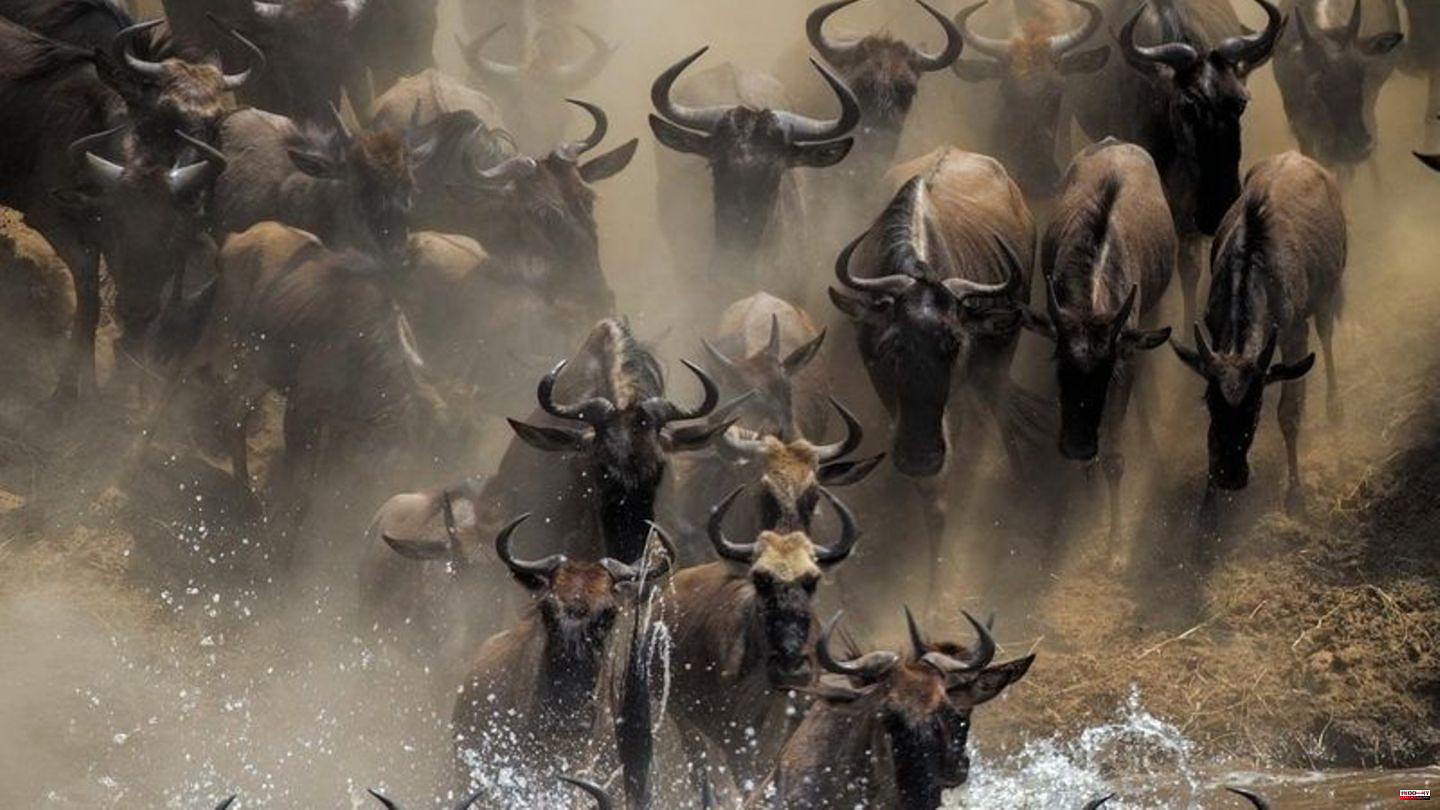Every year, more than a million wildebeest migrate in the East African savannah between the Tanzanian Serengeti and the Masai Mara in Kenya. However, roads, fences and human settlements are now interrupting old migration routes on the African continent.
This has an impact on the genetic health of animals that have been cut off from historical migration routes, reports a research team in the journal “Nature Communications”. "Our results clearly show that wildebeest that no longer migrate, even though they used to, are genetically less healthy than those that continue to migrate," said Rasmus Heller from the University of Copenhagen.
Their genetic diversity is lower and there is more inbreeding within the herd. The scientists suspect that this also has an impact on the animals' fertility and survival rate.
Sharp decline in large migrations
150 years ago, many wildebeest populations would have undertaken large migrations, explains the research team. 40 years ago there were only two large, intact migrations left: the famous one in the Serengeti Mara and one in the Kalahari Desert in southern Africa.
"In Botswana in particular, however, fences have recently been erected to protect livestock from contact with migratory wild animals," explained co-author Mikkel Sinding from the University of Copenhagen. The Kalahari population in Botswana declined from about 260,000 in the 1970s to fewer than 15,000 in the late 1980s. "Today the only large population remaining is that of the Serengeti Mara."
Species not endangered - spread is nevertheless decreasing
For the study, the researchers analyzed the genes of 121 wildebeest from the entire range from South Africa to Kenya. While the number of animals overall is relatively stable and the species is not endangered, the number in individual locations has declined sharply, it said. "If we want the species to not only survive for the next 50 years, but also thrive and survive in the long term, we need to stop the genetic decline caused by the disruption of its natural migratory routes," Heller said.
The study shows that wild animals, for whom migration is an essential part of their biology, will struggle in a human-dominated world if no attention is paid to preserving their ancient migration routes. This is likely to apply not only to wildebeest, but also to other migratory animal species, says Heller. In the long term, it can be assumed that animal species with lower genetic diversity will be less able to adapt to the effects of climate change.
Study












